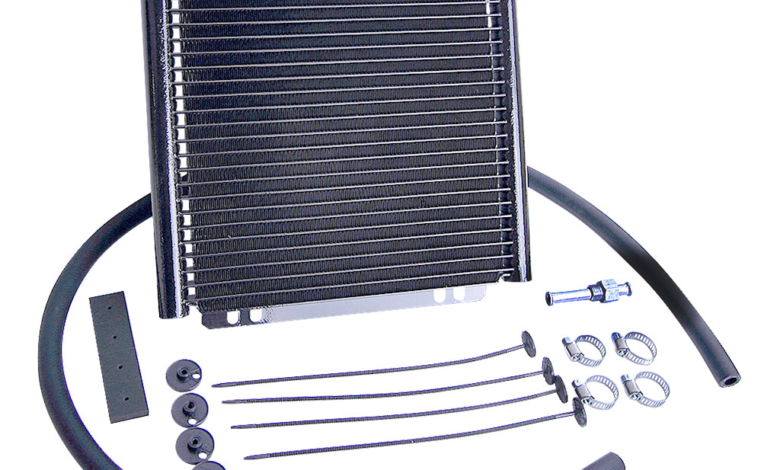Cooler Connections: Band Clamps Unveiled in Transmission Cooler Installations

Introduction to Transmission Coolers and Their Importance
When it comes to keeping your vehicle running smoothly, one often overlooked component is the transmission cooler. This crucial device helps regulate the temperature of your transmission fluid, preventing overheating and potential damage. However, installing a transmission cooler can be a bit trickier than you might expect.
Traditionally, hose clamps have been used to secure these coolers in place. While effective to some extent, they can be unreliable and prone to leaks over time. But fear not! There’s a new player in town – band clamps! These innovative connectors offer numerous benefits that make them the preferred choice for transmission cooler installations.
In this blog post, we’ll explore the world of band clamps and their invaluable role in maintaining optimal performance for your vehicle’s transmission system. From different types available on the market to step-by-step installation instructions and maintenance tips – we’ve got you covered! So let’s strap ourselves in (pun intended) as we dive into the wonderful world of band clamps for transmission coolers.
The Traditional Method of Using Hose Clamps for Installation
The traditional method of using hose clamps for installation has been a common practice in connecting transmission coolers. Hose clamps, also known as worm gear clamps, are typically made of stainless steel and feature a screw mechanism that tightens the clamp around the hose or pipe. While they have served their purpose over the years, there are some drawbacks to using hose clamps in cooler connections.
One issue with hose clamps is their tendency to loosen over time. This can lead to leaks and inefficiency in the transmission cooling system. Additionally, the constant tightening and loosening of hose clamps can cause wear on the hoses themselves, potentially leading to failure.
Another drawback is that hose clamps require tools such as screwdrivers or pliers for installation and adjustment. This can be time-consuming and cumbersome, especially when working in tight spaces under a vehicle.
Furthermore, hose clamps may not provide an optimal seal due to their design. The circular shape of traditional worm gear clamps does not evenly distribute pressure along the entire circumference of the connection point.
Thankfully, there is an alternative option available – band clamps. These specialized fasteners offer several benefits when it comes to cooler connections for your transmission.
Stay tuned for our next blog section where we will introduce you to band clamps and explore their advantages over traditional hose clamp installations!
Introducing Band Clamps and Their Benefits in Cooler Connections
Introducing band clamps as an alternative to traditional hose clamps is a game-changer when it comes to cooler connections in transmission installations. These innovative fasteners offer numerous benefits that can greatly enhance the performance and durability of your cooling system.
One of the key advantages of using band clamps is their superior strength and stability. Unlike hose clamps, which can loosen over time due to vibration or temperature changes, band clamps provide a secure and reliable connection that won’t budge. This ensures optimal heat transfer from the transmission fluid to the cooler, maximizing cooling efficiency.
Another benefit of band clamps is their ease of installation. With traditional hose clamps, you often have to struggle with tightening them just right without damaging the hoses or creating leaks. Band clamps eliminate this hassle by offering adjustable tension, allowing for a snug fit without any guesswork.
Additionally, band clamps are designed with longevity in mind. Made from high-quality materials such as stainless steel or aluminum alloy, they are resistant to corrosion and wear caused by exposure to moisture and harsh environmental conditions. This means you can count on them for long-lasting performance without frequent replacements.
In terms of aesthetics, band clamps also have an edge over their counterparts. Their sleek design adds a professional touch to your transmission cooler setup while ensuring a clean appearance under the hood.
Whether you’re installing a new transmission cooler or upgrading your existing setup, considering band clamps as your preferred connection method is definitely worth it! The benefits they offer in terms of strength, ease of installation, durability, and visual appeal make them an excellent choice for any cooling system application
Types of Band Clamps Available
When it comes to installing a transmission cooler, using band clamps can provide many benefits over traditional hose clamps. Band clamps are designed specifically for securing and connecting various components in cooling systems, including transmission coolers. They offer a more secure and reliable connection that helps prevent leaks and ensure efficient cooling.
There are different types of band clamps available on the market, each with its own unique features and advantages. One common type is the stainless steel band clamp. These clamps are durable, corrosion-resistant, and able to withstand high temperatures without losing their grip.
Another popular option is the T-bolt clamp. With its adjustable design, this clamp allows for easy installation and precise tightening for a secure fit. It also provides excellent sealing capabilities to prevent any fluid leakage.
For those looking for even more versatility, worm drive or screw-type clamps may be the way
to go. These clamps have an adjustable screw mechanism that enables them to fit various sizes of hoses or tubing.
No matter which type of band clamp you choose, make sure to select one that is appropriate for your specific transmission cooler installation needs. This will help ensure optimal performance and longevity of your cooling system.
Remember that proper installation is key when using band clamps. Follow the manufacturer’s instructions carefully to avoid any issues down the line.
There are several types of band clamps available for transmission cooler installations – stainless steel bands, T-bolt clamps, worm drive/screw-type clamps – each offering its own set of benefits. Choosing the right type based on your needs can help ensure a secure connection and efficient cooling performance for your transmission cooler system
Step-by-Step Guide on How to Install a Transmission Cooler Using Band Clamps
When it comes to installing a transmission cooler using band clamps, following a step-by-step guide can help ensure a smooth and successful installation. Here’s how you can do it:
Step 1: Start by locating the best position for your transmission cooler. Ideally, it should be mounted in front of the radiator to maximize airflow.
Step 2: Once you’ve determined the location, use self-tapping screws or mounting brackets to secure the cooler in place.
Step 3: Next, connect one end of the transmission hose to the outlet on your vehicle’s transmission. Make sure to tighten the band clamp securely around the hose.
Step 4: Attach another length of hose to the inlet on your transmission cooler and fasten it with another band clamp.
Step 5: Now, connect one end of this second hose to the other port on your vehicle’s transmission and secure it with a band clamp as well.
Step 6: Attach the remaining end of this second hose to an appropriate fitting on your transmission cooler and tighten with yet another band clamp.
By following these steps carefully and using reliable band clamps for each connection point, you’ll have successfully installed a transmission cooler that will help keep your vehicle’s temperature under control during heavy-duty usage or towing situations. Remember that proper installation is crucial for optimal performance!
Maintenance Tips for Band Clamps
Keeping your band clamps in top condition is crucial for the longevity and effectiveness of your transmission cooler installation. Here are a few maintenance tips to ensure that your band clamps stay secure and leak-free.
1. Regular Inspections: It’s essential to visually inspect your band clamps regularly, especially after long trips or when you notice any signs of leakage or looseness. Look for any signs of wear, rust, or damage on the clamp itself or the connection points.
2. Tightening: Over time, vibrations and temperature changes can cause band clamps to loosen slightly. Therefore, it’s important to periodically check and tighten them if necessary using appropriate tools such as a screwdriver or ratchet wrench.
3. Lubrication: Applying a small amount of lubricant on the inner surface of the band clamp can make tightening easier and help prevent corrosion between metal surfaces.
4. Corrosion Prevention: To protect against rusting and corrosion, consider applying an anti-corrosion spray or coating on the band clamp assembly.
5. Avoid Over-Tightening: While it’s important to ensure a tight seal, over-tightening can lead to distortion of components or even breakage. Follow manufacturer guidelines regarding proper torque specifications for your specific band clamp model.
By following these simple maintenance tips, you can prolong the life of your band clamps and maintain optimal performance in your transmission cooler installation.
Comparing the Cost and Durability of Traditional Hose Clamps vs Band clamps
When it comes to the cost and durability of transmission cooler installations, the choice between traditional hose clamps and band clamps is an important consideration. Let’s take a closer look at both options.
Traditional hose clamps are widely used in various applications, including transmission cooler installations. They are affordable and readily available at most automotive stores. However, their durability can be a concern over time. The constant exposure to heat and pressure can cause these clamps to weaken or even break, leading to potential leaks in the system.
On the other hand, band clamps offer several advantages when it comes to cost and durability. While they may be slightly more expensive upfront compared to hose clamps, they provide a secure and long-lasting connection for your transmission cooler. Band clamps are made from durable materials such as stainless steel or zinc-plated steel, offering excellent resistance against corrosion and wear.
Moreover, band clamps provide uniform pressure distribution around the entire circumference of the connection point. This helps create a tight seal that minimizes any potential leakage issues. Additionally, some band clamp designs feature adjustable tension settings, allowing for easy installation and future adjustments if needed.
In terms of maintenance, band clamps require minimal attention once installed properly. It is recommended to periodically inspect them for any signs of wear or loosening but overall they tend to hold up well over time with regular use.
To sum it up without being conclusive or summarizing too much – while traditional hose clamps may be cheaper initially, investing in high-quality band clamps can offer greater durability and peace of mind when it comes to your transmission cooler installation.





Your article helped me a lot, is there any more related content? Thanks!